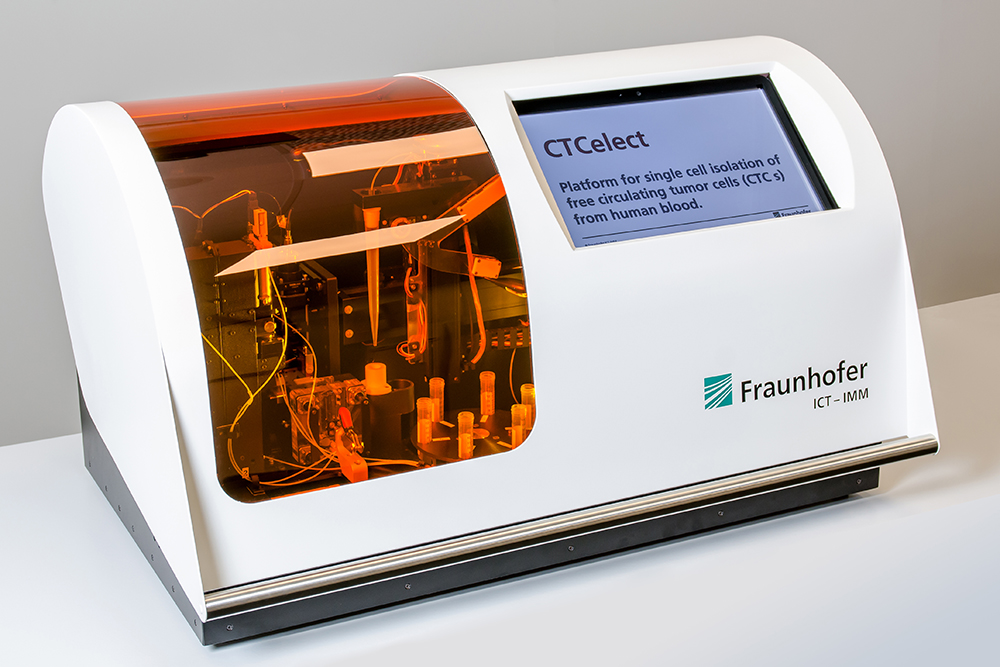Automation for future-oriented cancer research

The course of a cancerous disease is difficult to predict and, thus, the prognosis for the patient often is uncertain. Although it is known that each patient responds differently to one and the same therapy in clinical practice diagnostic and therapeutic options are still not sufficient to allow for a treatment taking into account the patient’s individual tumor characteristics. For a more efficient investigation of individual courses of disease we have developed a fully automated system for the “liquid biopsy” in order to isolate single tumor cells (CTCs) from patient blood. The system is designed to enable cancer researchers to obtain CTCs from individual patients and, on the basis of them, to study tumor characteristics and develop therapeutic approaches. This would be a further step towards the so-called personalized healthcare by means of which a therapy could be tailored to each single patient with so far unmet precision.
Functionalities
In a first step the tumor cells are “catched” from the sample by means of immunomagnetic separation and are then transferred into a smaller sample volume. The tumor cells are coupled with magnetic particles, using the specific characteristic of the cell surface, and are extracted from the blood sample using magnetic fields. Subsequently the extract is transferred into a microfluidic cartridge in which the tumor cells are detected by flow cytometry in order to remove the unspecific cell background. By means of hydrodynamic focusing of the sample in the cartridge a nearly ideal isolation of cells can be achieved. After the detection of a tumor cell in the microchannel the single cells are dispensed directly into cavities of a microtiter plate by pressure pulse. Each isolated tumor cell can then be examined for its genetic and molecular biological characteristics.
Features
Right from the start of the development we were eager to use affordable components in the system design to optimally position such a system on the market. Thus, the optical components of the system have been integrated with cost-effective injection molded polymer cartridges. Fluorescence excitation and detection are made possible by an easy to integrate, self-adjusting optical access to the polymer cartridge. This allows for a simple exchange of the contaminated parts prior to each analysis. As a result, time-consuming and cost-intensive calibration and cleaning steps no longer apply. The compact and cost-effective OEM design enables the development of a new generation of pipetting heads for the growing market of cell experiments as well as the integration into devices for a fast on-site analysis.
Our research and development services
The application fields of the CTCelect system reach far beyond the detection of circulating tumor cells and include water analysis, diagnostic and life science applications as well as routine tests in hematology, infectiology and immunology.
related data sheet: CTCelect: Isolation Of Single Rare Cells From Human Blood
Funded by: 7th Framework Programme of the European Commission, project reference 258604; Federal Ministry of Education and Research, reference numbers 131A020B, 03VP01061
 Fraunhofer Institute for Microengineering and Microsystems IMM
Fraunhofer Institute for Microengineering and Microsystems IMM